Σε αυτό το παράδειγμα, we will demonstrate how to analyze a member made from a thin steel plate profile. The profile has the channel section with a plate thickness of 1.5 mm and a length of 1500 χιλ. Diaphragms, with a thickness of 20 χιλ, are attached to both ends of the member. Boundary conditions are applied at the member’s ends: the left side is rolled while the opposite end is pinned. The material properties for the parts are defined with a yield strength (fy) του 355 MPa. The member is subject to an axial compressive force of 1000 ΚΝ.
To see this analysis in action and gain a better understanding, watch the quick video demonstration provided below:
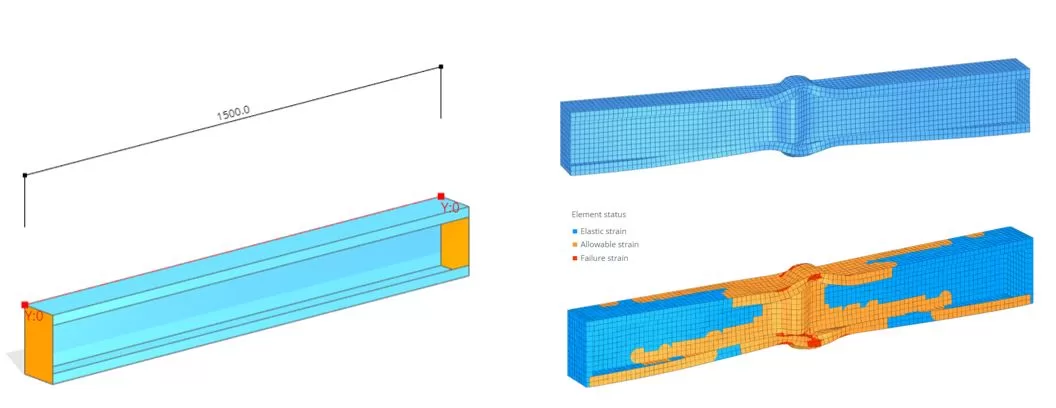
Βήμα 1. Model Parts
Go to the ‘Main Parts’ menu and select the ‘PROFILE’ αυτί. Input the edges for both the starting (Εγώ) and ending (ι) τμήματα. To input the sections’ γεωμετρία, you can import a DXF file stored locally on your PC. The dxf file can be received from εδώ
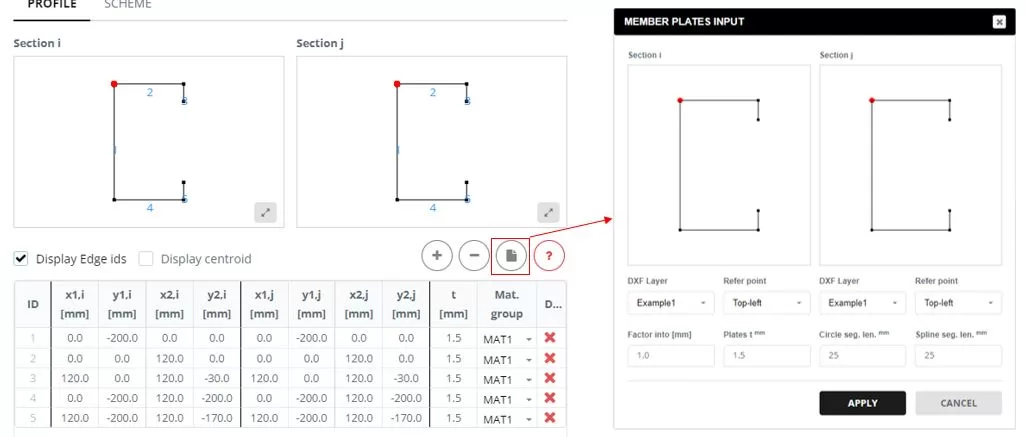
Go to the ‘SCHEME’ αυτί. Set the member length to 1500 χιλ. Add diaphragms to the ends, selecting the ‘Polygon’ τύπος. The edges for the diaphragm are defined in a popup window that appears when you click on the ‘Diaphragm Edges’ column cell. In the ‘DIAPHRAGM INPUT’, select the edges that form the diaphragm shape and input the thickness (τ).
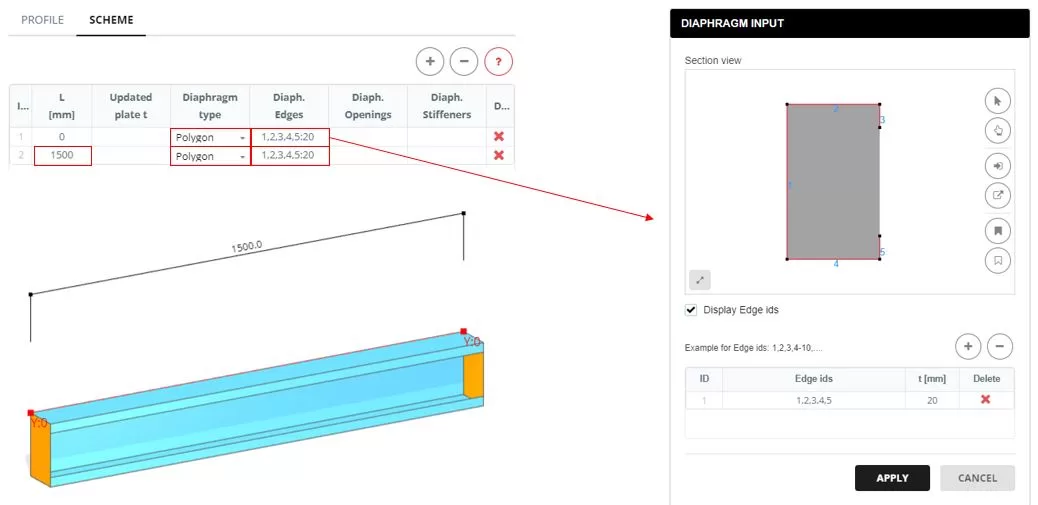
Βήμα 2. Πλέγμα
Navigate to the ‘Meshing’ μενού. Set the FE element size to 15 χιλ, then click the ‘Generate’ κουμπί. The color of mesh can by updated by the plate thickness (‘SETTINGS’ > ‘Mesh color by’)
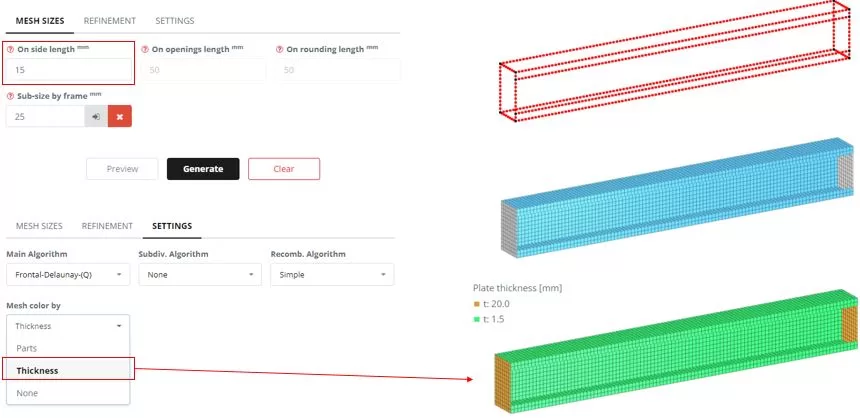
Βήμα 3. Ατέλειες
Navigate to the ‘Imperfection’ μενού. Set the settings, then click the Preview’ κουμπί.
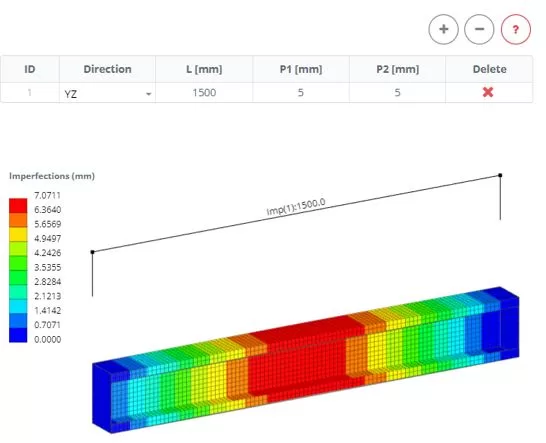
Βήμα 4. Boundaries and Load
Navigate to the ‘Boundaries‘ > ‘Rigid Ends’ menu. Set the end boundary constrains. Navigate to the ‘Loads‘ > ‘Rigid Ends’ menu. Apply an axial load of 1000 kN to the left end of the member for compression.

Βήμα 5. Analysis and Load-Displacement tracking
Navigate to the ‘Analysis‘ menu. Select Nonlinear Explicit including geometry and material nonlinearity. Click ‘Perform Analysis’ button.
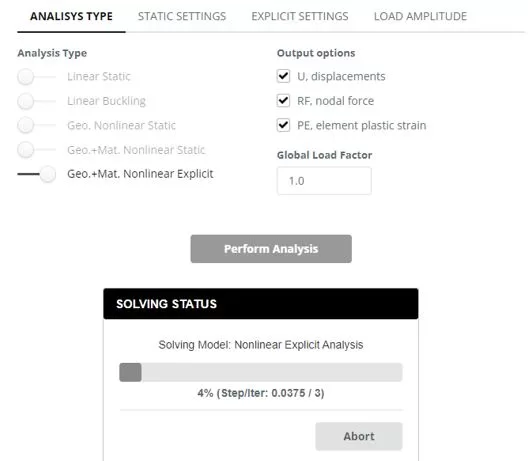
While the analysis is in progress, navigate to ‘Chart’ menu. Πρώτα, select a node to measure the Ux displacement (βήματα 1 και 2). Τότε, using frame selection, choose nodes from which to extract the Rx reaction forces (βήματα 3 και 4). Monitor the chart’s changes to identify the critical force (Pcr) that leads the structure to failure. Terminate the ongoing analysis once the failure state is detected.
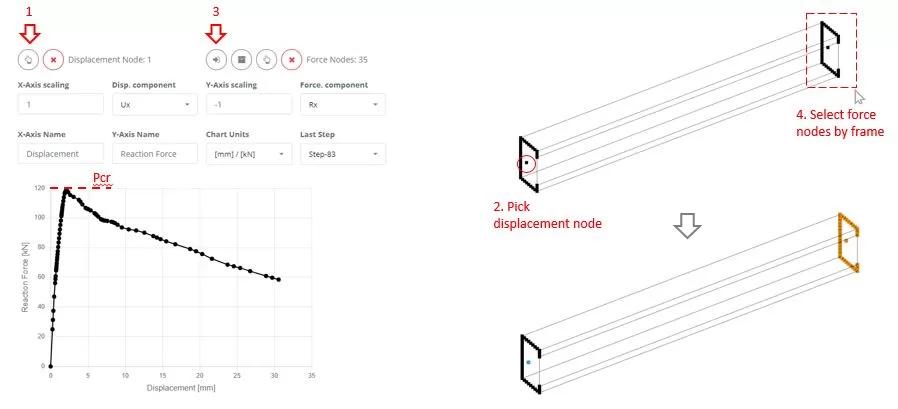
Βήμα 6. Αποτελέσματα
Navigate to the ‘Results’ μενού, choose your preferred results options, and click ‘Display’ to view the deformed state of the model.
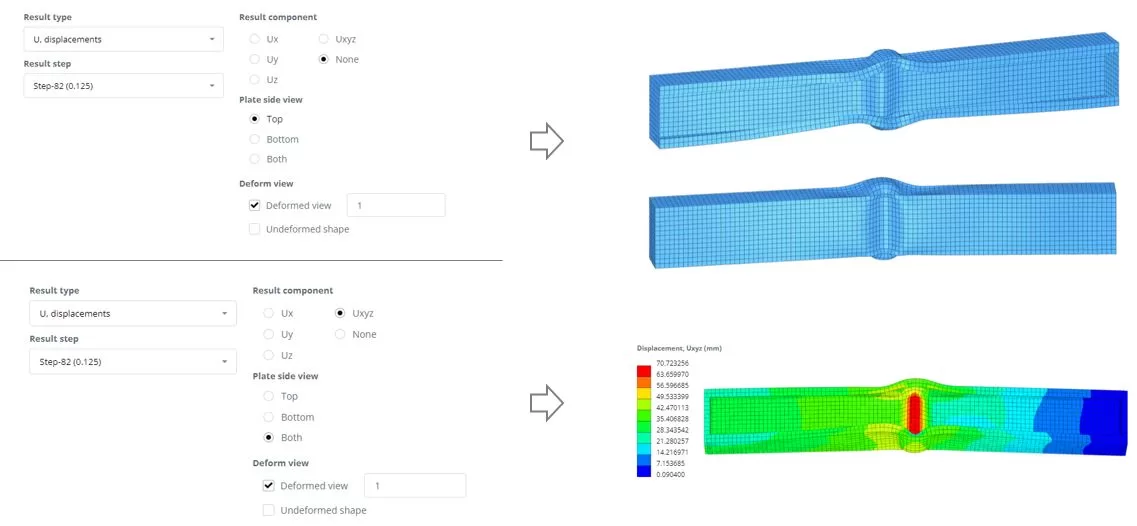

Λογισμικό δομικής μηχανικής SkyCiv
Αν δεν το έχετε κάνει ήδη, εγγραφείτε δωρεάν με το SkyCiv σήμερα και ξεκλειδώστε ισχυρά εργαλεία δομικής ανάλυσης και σχεδίασης για να επιταχύνετε τα μηχανολογικά σας έργα!


